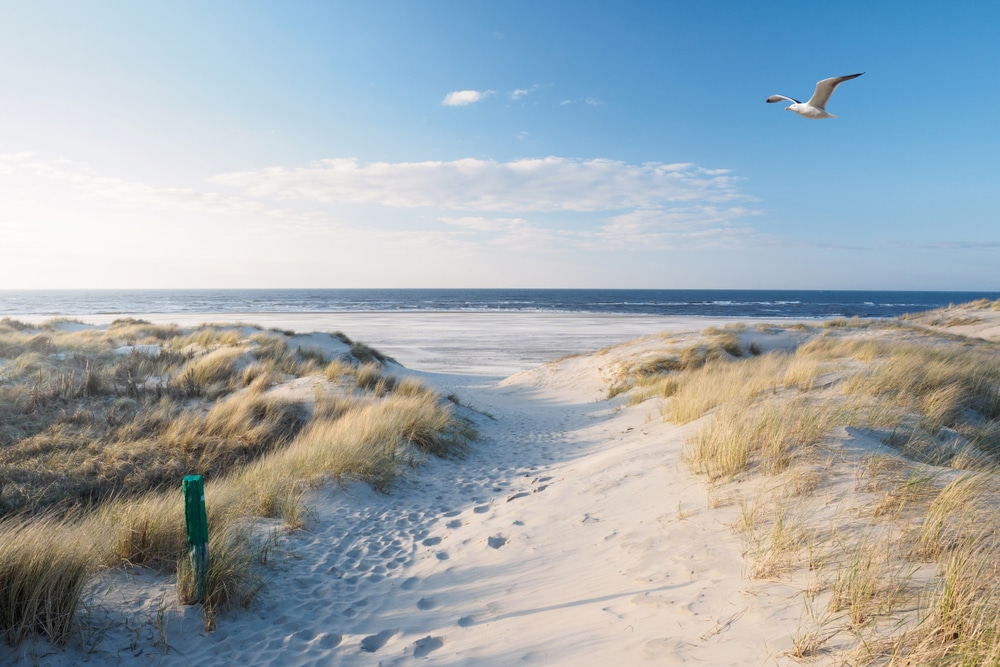
The German North Sea Islands are divided into the island kingdom of North Frisia and the East Frisian North Sea Islands. In the popularity scale, the North Frisian island of Sylt is likely to claim undisputed first place. But the other island beauties are in no way inferior to Sylt. Unfortunately, not even in terms of real estate prices. However, the popularity of German North Sea islands is not defined by real estate prices, but by the island’s own natural areas, numerous excursion, sports and leisure facilities, as well as family-friendliness and recreational value.
The North Frisian North Sea islands include Sylt, Föhr, Amrum and Pellworm as well as the offshore island of Heligoland as an outpost. The still inhabited Halligen Hooge, Langeness, Oland and Gröde as well as Nordstrandischmoor are by definition not islands. They play a subordinate role in tourism. Nevertheless, they are attractive and worth experiencing. The East Frisian Islands include Borkum, Juist, Norderney, Baltrum, Langeoog, Spiekeroog and Wangerooge. From a tourist point of view, Borkum is the most popular holiday resort in East Frisia with over 300,000 guests per year.
Fans of the German North Sea often fall in love with one of the islands and remain loyal to it for years by rebooking their holiday apartments on the North Sea , often directly during their stay.
The most popular North Frisian islands
1. Sylt
Sylt is the most sought-after destination for the German chic. But not only. With an area of 99.14 square kilometers, the island is the largest North Sea island in Germany. At the same time, Sylt has the highest density of celebrities to offer. In keeping with the image, gourmet chefs, luxury brand shops and posh hotels cavort here alongside accommodation for ordinary consumers. What attracts everyone equally are the miles of sandy beaches, the Sylt heathlands and the quick journey via the Hindenburgdamm.
2. Föhr
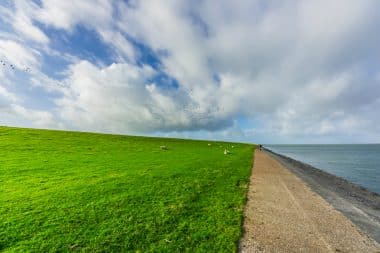
Föhr advertises neither heathland nor dune belts, but flat marshland. This does not detract from the popularity of the 82.82 square kilometre island below Sylt. Many regular guests come back again and again. The island’s capital Wyk offers numerous shopping opportunities. At the same time, the oldest local history museum in the North Frisian Islands can be found here. The other island towns on Föhr still have a typical Frisian character. The mudflat hike to the Amrum Nordspritze is just as popular as bicycle tours or horseback rides.
3. Amrum
The 20.47 square kilometre North Sea island of Amrum is now called Sylt II – mainly because Sylt conditions are increasingly establishing themselves here. However, the celebrity density is not yet at Sylt level. Family-friendliness is a top priority. In terms of landscape, Amrum scores with protected mudflat landscapes, extensive heathland and a wide dune belt, which is preceded by the 1.5 kilometre wide and 15 kilometre long beach “Kniepsand”. The once typical Frisian character of Amrum’s island villages is increasingly being corrupted by new buildings in the Sylt style. The island village of Nebel has been a tourist attraction for years.
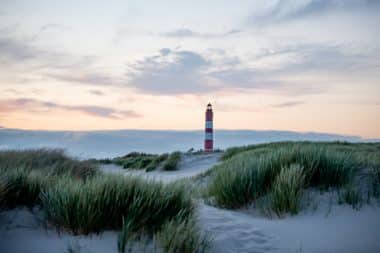
4. Pellworm
Pellworm is a remnant of the formerly existing North Sea island of Strand, which no longer exists since a storm surge in the 17th century. This North Frisian island has so far been overshadowed by the island of Sylt and Amrum in terms of tourism. The landscape is dominated by flat marshland. Because of the density of sheep, some are already talking about “Little Ireland”. On the other hand, Pellworm has been scoring points since 2021 by being recognized as one of two German “star islands” by the “International Dark Sky Association”. If you want to watch the night sky after the island day, this is the place to be.
5. Heligoland
Heligoland is the only German offshore island. It belongs neither to the North Frisian nor to the East Frisian islands. Heligoland is popular with day tourists, but has so far been underrated by long-term holidaymakers. The stay on the North Sea island, which is only 4.21 square kilometres in size, offers duty-free shopping as well as nature experiences. On the offshore bathing sandbank, grey seals and seals often sunbathe. Heligoland’s landmark is a red rock called “Lange Anna”.
The most popular East Frisian North Sea islands
1. Borkum
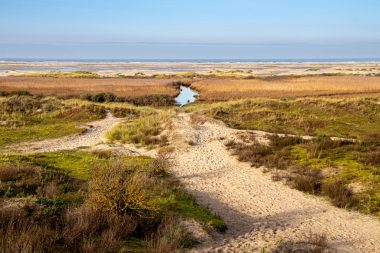
The North Frisian island of Sylt is located near the Danish border. The East Frisian island of Borkum near the Dutch. As the largest of the East Frisian Islands, Borkum scores with long sandy beaches, mild climate and a location in the “Lower Saxony Wadden Sea” National Park. The historic Borkum lighthouses illuminate a popular holiday island with an area of square kilometres.
2. Juist
On the 16.43 square kilometre island of Juist, tourism has been the largest employer since the 19th century. The East Frisian island is completely car-free. All consumables must be brought to their destination by horse-drawn carriage. This alone ensures numerous guests who appreciate peace and relaxation. Nevertheless, the island stay is not cheap. The reputation of exclusivity, which is reflected in the prices, precedes the Juist holiday. As the largest freshwater lake of all North Sea islands, the Hammersee greets you.
3. Norderney
Norderney is considered the most prominent North Sea island next to Sylt. Like all other North Sea islands, there are endless sandy beaches, dunes and the typical wildlife of the North Sea. The 26.29 square kilometre North Sea island is the second largest and at the same time the most populous East Frisian island. Water sports enthusiasts will also find an El Dorado here. Landlubbers and families with children will find all kinds of leisure activities on Norderney.
4. Baltrum
Baltrum is relatively small with an area of only 5.5 square kilometres. The island is only the size of the North Frisian Hallig Hooge. Those seeking peace and relaxation enjoy island tours, where you can discover something new every day. Baltrum’s landmark is the Old Island Church. The island offers a tidal path that tells the island’s history. A visit to the National Park House connects with the surrounding nature of the Lower Saxony Wadden Sea.
5. Langeoog
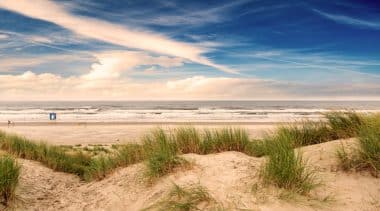
The car-free island of Langeoog also offers long island beaches and dune belts, which can be reached quickly from Bensersiel. Some people refer to this North Sea island with a wink as the “longest sandbox” on earth. Langeoog is predestined for spontaneous short breaks from Lower Saxony. Large hotels are in short supply. Small guesthouses and private accommodations dominate. The octagonal water tower is considered a sight.
6. Spiekeroog
Anyone who boards a ferry in Neuharlingersiel and sails to Spiekeroog, Germany’s second certified “Star Island”, is looking for peace and relaxation. The car-free North Sea island with its 18.25 square kilometers of area also magically attracts celebrities. In addition to nature and relaxing tranquility, there are unusual experiences with a historic cemetery called “Drinkeldooden-Karkhof” (drowning dead cemetery), the oldest island church among East Frisia’s islands, a shell museum or a museum horse-drawn tram.
7. Wangerooge
For relaxing short breaks, the 7.94 square kilometre North Sea island of Wangerooge is just the right place. Horseback rides on the mudflats or mudflat hikes are just as popular with holidaymakers, leisurely bike tours or walks through the island’s dune belt. The New Lighthouse of Wangerooge experienced a rush of more than 1,000 applicants in 2024 when the position of lighthouse keeper was publicly advertised. The National Park House opens up the flora and fauna of the Lower Saxony National Park near the island.

